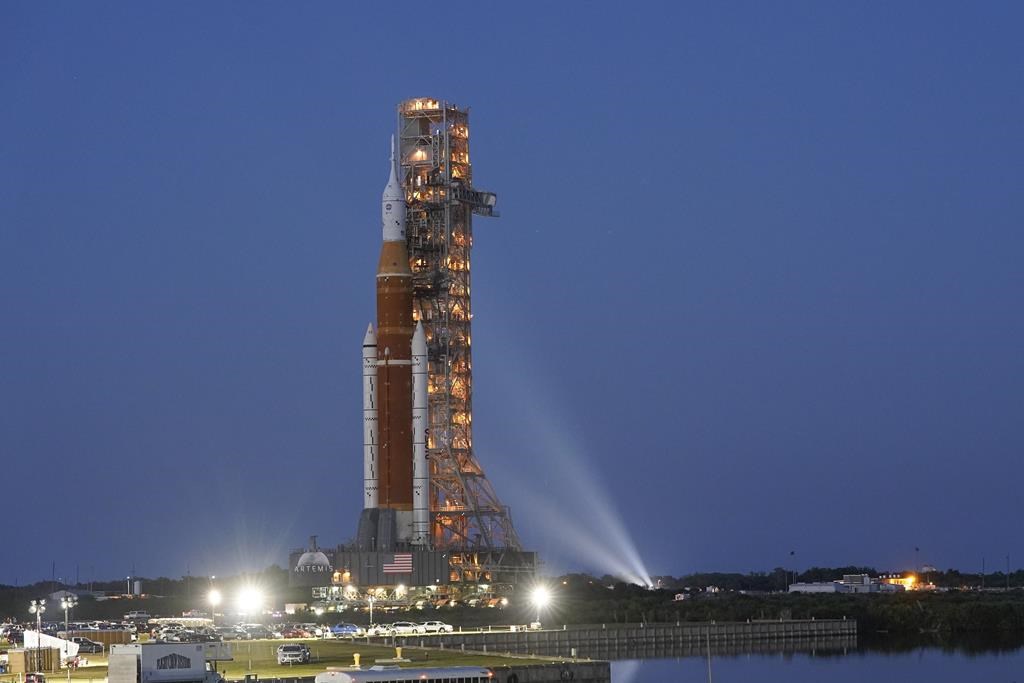Artemis expected to ignite interest in space: Calgary scientists say

Posted Nov 18, 2022 2:13 pm.
Last Updated Nov 18, 2022 2:15 pm.
The Artemis launch is expected to increase interest in space research, a University of Calgary (UCalgary) physicist and a former astronaut say.
When NASA sent a rocket to the moon decades ago, a shockwave was felt by people around the world, including scholars.
The mighty Saturn V rocket’s launch shattered windows 18 kilometres from Florida’s Kennedy Space Centre, and rattled seismometers 1,500 kilometres away in New York City.
Dr. Eric Donovan, associate professor in the Department of Physics and Astronomy, was among the millions watching Apollo 8’s launch when it left Earth, as humanity’s first crewed orbit of the moon.
“My field, which is space physics, wouldn’t exist without the moon race of the 1960s,” said Donovan. “In a very real sense, I owe my career pathway to the moon race of the 1960s and there’s no hyperbole in that.”
AggreWell, an organoid manufacturing platform developed by @ucalgaryvetmed's Dr. Mark Ungrin, is being used by @NASA to produce heart organoids for its latest science mission https://t.co/50v2LP51O7 #UCalgary pic.twitter.com/T2KXJC3ENR
— U Calgary (@UCalgary) November 18, 2022
Dr. Robert Thirsk, former chancellor and record-holding Canadian astronaut, was inspired by Apollo’s program to start his post-secondary journey as a UCalgary engineering student. He went on to spend 204 days in space.
Thirsk’s experience in seeing a rocket leave Earth is one of a kind.
“After I began training as an astronaut, I read everything I could about space flight — I saw all the movies, I read all the training manuals, and I talked in the hallway with astronauts who’d been there,” Thirsk said.
“But when you go up there and see for yourself, it’s something you can’t prepare for. I was about 20 minutes into my first flight, busy at my tasks, when someone tapped me on the shoulder. I looked out, and there was the sun, glinting off the Atlantic Ocean.”
“Beyond the ocean was the curve of the Earth’s horizon, and beyond that, the inky, black void of space. It was a view I’ve never forgotten, and even now, it sends a chill up my spine.”
READ MORE:
-
Moon rocket launch looms as NASA evaluates hurricane damage
-
Canada’s ‘first-ever’ space health research conference launches at UCalgary
He says this week’s launch of Artemis 1 will inspire many more.
“I think you’ll see a new wave of inspiration hitting the world once this starts happening,” Thirsk said.
“I think the intangible benefits of what we’re talking about right now is encouraging young people to consider STEM as a career path, and encouraging society to take on other audacious or seemingly near-impossible challenges that are out there now.”
To the moon and Mars
NASA’s Artemis 1 mission is expected to be a major step toward returning astronauts to the moon and, if successful, to Mars.
The crewless Artemis mission is going to test both the Space Launch System (SLS) megarocket, and the Orion crew capsule, which will orbit the moon before returning to Earth over a journey of 42 days.
Meanwhile, NASA says this will kick off a new phase of space exploration, leading to the study of new regions of the moon by diverse astronaut groups in 2024 and 2025, and finally leading to crewed missions to Mars.
Astronauts’ return to the moon will be backed by research conducted since the 1960s, embarking a new path of discovery to Mars.








